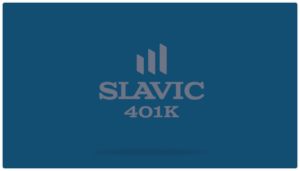In 2022, the U.S. Bureau of Labor Statistics (BLS) reported that Americans experienced a 9.1% increase in prices for everyday goods and services, vehicles, homes, utilities, medical care, education and more, the highest reported increase in 40 years.
Because of rising costs, many people find their budgets thinning and dollars not going as far as they used to, forcing them to make cuts where possible. Whether that means canceling a family vacation or dining out less, Americans everywhere have tough choices to make.
Some decreases though, like cutting back on 401(k) contributions, can be more harmful than helpful. While it may be nice to have a few extra dollars today, every decrease pushes your retirement date back and pauses the opportunity for your money to grow for the future. To learn how to make adjustments in your everyday life that won’t impact your financial future, read the tips below.
Review Your Budget
The first step to making adjustments is to review your budget. Budgeting is a great way to keep track of your income and expenses so you can see where you might be overspending and under saving.
The 50/30/20 rule is a great way to start managing your budget. The rule divides income into three categories: essentials, wants and desires, and savings and debt payoff. By dividing your income into these three categories, you can easily visualize where changes need to be made.
Financial apps like Mint, Spendee, or You Need a Budget, offer online and mobile app options to help you manage your budget from your fingertips. Simply connect your accounts, including credit cards, savings and checking, 401(k) and other retirement accounts, loans, and more, to start tracking, setting goals, and making adjustments. View a list of the top five financial apps.
If you don’t want to use a digital platform, read the Slavic401k blog to learn how to use budget sheets for everyday tracking. By making adjustments to your non-essential spending, you can continue to contribute to your retirement accounts without negatively affecting your retirement date or funds.
Make Spending Adjustments
It’s easy to fall into a “treat yourself” mindset, but by utilizing tools like the 50/30/20 rule, you’ll be able to see where you may be overspending and overtreating.
The first category you should worry about when experiencing amplified inflation is the non-essential spending category. This includes purchases like streaming services, salon services (manicure/pedicure, facials, hair color, etc.), dining out, coffee stops, and more. A sure-fire way to help you reduce spending is to cut back on purchases in this category. Assess your budget and make reductions where you can. Do you really need a subscription to five streaming services, or is one or two enough? Use the savings to contribute to your 401(k) or IRA plans.
Another way to help you reduce spending is to review your loans. This includes lines of credit, auto loans, home loans, student loans, and personal loans. Every loan you have accrues interest, so calculate which loan has the highest interest rate and focus on paying that down first. You can also look for ways to lower your interest through refinancing loans (when advantageous) and consolidating into fewer accounts when possible. As you pay down debt, you will stop accruing so much interest, which will save you money in the long run.
Turn Your Hobby into a Side Hustle
If you still find yourself needing extra money to get by, it’s time to get creative. Do you have a hobby or skill you can profit from? Maybe you are a skilled writer and can offer tutoring services or have a passion for the arts and can help children enhance their skills. You can even open an Etsy store and sell your creations online or start a website for your baked goods or freelance services.
There are many options to make extra money if you have the time. The income made from your side hustle can be used to increase 401(k) or IRA contributions or maintain a steady deposit schedule so you can keep your retirement goals on track.
Enroll in Company Match
Do you like free money? Make sure you’re enrolled in your employer’s 401(k) match program if it’s offered. 401(k) matching provides employees an extended retirement benefit that allows both you (the participant) and the employer to contribute funds to an account.
Many companies have rules and restrictions on the match programs, so make sure you understand the terms before getting started. You may be required to stay with the employer for a specific amount of time or contribute a specific percentage of your salary to qualify.
Many employers match up to 3-5% of the contributions, meaning that if you contribute 3% of your salary each year and your employer contributes an additional 3%, then you have 6% contributed to a 401(k) each year – that’s huge!
If you’re like many Americans and are struggling with everyday expenses right now, these tips should help you get on track and maintain a steady, healthy budget without compromising your finances today or in the future. For additional assistance, use Slavic Wealth Management to help you plan for the future.




